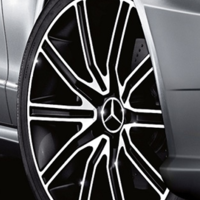Not long ago, it wasn’t that easy to spot an electric vehicle. They seemed rare, like something only movie stars, aging hippies, and Silicon Valley entrepreneurs drove.
But now that EVs are becoming popular, it's fair to wonder: What's it like to own one? We asked veteran automotive journalist and author Jim Motavalli how EVs are similar to, and different from, gas-powered vehicles. Motavalli has been writing about alternative vehicles since the mid-1980s, and in his assessment, EVs are "not only just as good as gas-powered cars — in many cases, they're better."
Motavalli helped us answer some common questions that people in the market for an EV might have, and made the case for why they will eventually “dominate the roads.”
"EV owners tend to be very enthusiastic about their cars," says Motavalli. They track their charge level and often keep them plugged in at night in their home garages. They also take advantage of more than 8,000 available public charging stations, according to the U.S. Department of Energy. About 180 more stations are also being added every month, usually in public parking garages and employee parking lots.
“About 180 charging stations are added every month.” #Mercedes #Electric
Motavalli notes that the “infrastructure cost for setting up a charging station is comparatively low, at around $10,000,” so finding a charging station will only get easier as time goes on. He adds that the previous lack of charging infrastructure is now “yesterday’s problem.”
Worrying about how far you can drive in an EV is common — so common in fact there’s even a term for it: range anxiety. On a full charge, an EV like the Mercedes B-Class can whip down the road for 87 miles. B-Class owners who have the optional Range Plus feature can also get an additional 15 miles beyond that when the feature is activated while charging.
But bear in mind that Americans drive, on average, just 40.7 miles a day, with a median driving range of only 31.6 miles, according to one study. Also remember that the math in favor of the EV gets even better when you take into account that electric vehicle owners average 27.9 miles between consecutive charging "events" with a median distance of only 19.8 miles. That means an EV can handle most daily chores.
“On a full charge, an EV like the Mercedes B-Class can whip down the road for 87 miles.”
Still, a lot of people do suffer from range anxiety. Potential EV owners might be worrying about the few annual road trips they’ll take, rather than those hundreds of short hauls to work and the mall. As Motavalli says, “People don’t think rationally when they buy cars,” and every owner has a different set of requirements that need to be taken into account at the time of purchase. Other potential owners might have very long commute, or maybe they live in rural areas without any nearby charging stations. The best way to think about an EV may be as an excellent second, daily-use car.
Unlike other cars, EVs don’t ramp up to full power. As soon as you turn them on, they have 100% of their torque. “They take off with great speed and alacrity,” Motavalli says. “That’s why they’re so good in drag racing. They just take off, with a feeling of effortless power.” That means when you’re merging onto the highway, an EV seems to glide into full speed. They’re also great for hills, because they don’t have that slight lurch as they shift into gear.
“They take off with great speed and alacrity,” Motavalli says.
EV maintenance costs are lower. “You don’t have to worry about timing belt replacements, transmission maintenance, fuel injectors, gasket replacements, oil leaks, exhaust systems, and so on,” Motavalli says. And because most of the braking in an EV is done magnetically — to capture the energy of the moving car and recharge the battery — the wear-and-tear on the braking system is less.
Over time, EVs are cheaper to maintain, at about $600 to $700 per year (whereas gas-powered cars come in well over $2,000 and scale up from there). Purchasing an electric vehicle also qualifies you for a $7,500 federal tax credit. And since time is money, we'll point out that in some states EVs can drive in the HOV lane and avoid traffic jams.
If Motavalli is right, someday we’ll be seeing electric cars everywhere. “EVs are going to dominate the roads,” he claims, “and most of the heads of the auto companies agree with me on this. It’ll take time — decades even — but sooner or later, EVs are going to take over the highways.” It doesn’t hurt that EVs are better for the environment than gas-powered cars, even when their electricity comes from coal-fired power plants
“It’ll take time — decades even — but sooner or later, EVs are going to take over the highways.”
According to Motavalli, the electric-vehicle future is going to ramp up slowly “but it’s going happen.” Some experts go even farther than Motavalli, on this: they argue that the real argument for electric cars is not the environmental one. It’s just that they’re better designed, more reliable, and more efficient than gas-powered cars.



